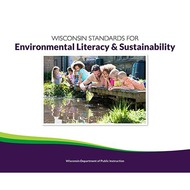AH-CHOO! A Case Study on Climate Change and Allergies
(View Complete Item Description)You work for ScienceSpeak, a public relations firm that educates the public about scientific issues. Your company has won a contract with the World Health Organization (WHO) to supply materials for their new multimedia public health campaign about climate change. The WHO is specifically interested in the relationship between climate change and the increasing prevalence of allergies and asthma worldwide. Your boss calls a meeting to discuss the contract. She gives you a set of Data Tables prepared for you by two expert scientists that summarize recent evidence on the effects of increasing carbon dioxide and temperature on allergenic plants. Your job is to design and produce a communication product such as a brochure, poster, web page, or television program that informs the public about potential links between climate change and allergies.
Material Type: Interim/Summative Assessment, Lesson Plan, Rubric/Scoring Guide




















